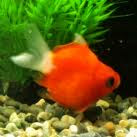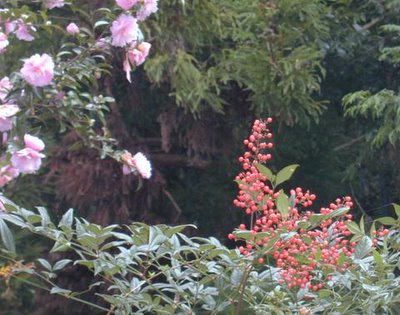. koi 鯉と伝説 Legends about carps - Karpfen .
. higoi 緋鯉 / ヒゴイ Legends about the Red Carp .
:::::::::::::::::::::::::::::::::::::::::::::::::::::::::::::::::::::::::::::::::::::::::::::::::::::
鯉さんも 恋煩いあるか 夜熱し
koi san mo koi wazurai aru ka yoru atsushi
can a carp
get love-sick?
hot summer night
© Gabi Greve, Summer 2007
:::::::::::::::::::::::::::::::::::::::::::::::::::::::::::::::::::::::::::::::::::::::::::::::::::::
This is a play on the word KOI
koi, the carp 鯉
koi, the love 恋
koi wazurai, lovesick 恋煩い
 © PHOTO aimako0358.hustle.ne.jp
© PHOTO aimako0358.hustle.ne.jp
:::::::::::::::::::::::::::::::::::::::::::::::::::::::::::::::::::::::::::::::::::::::::::::::::::
carp, koi 鯉
kigo for all summer
golden red carp, higoi 緋鯉 ひごい
"carp with freckles", madaragoi 斑鯉(まだらごい)
"sun carp", higoi 日鯉(ひごい)
"brocade carp", nishikigoi 錦鯉(にしきごい)、
Nishiki
"special carp", kawarigoi 変り鯉(かわりごい)
carp changing its color



Carp is a common name for various freshwater fish of the family Cyprinidae.
© Read the WIKIPEDIA !
:::::::::::::::::::::::::::::::::::::::::::::::::::::::::::::::::::::::::::::::::::::::::::::::::::
kigo for all summer
kingyo 金魚 goldfish
Goldfisch
some special names, all kigo
wakin 和金(わきん)"Japanese Gold"
ranchuu 蘭鋳(らんちゅう)
ryuukin 琉金(りゅうきん)
maruo 丸子(まるこ)"round kid"
onaga 尾長(おなが)"long tail"
demekin 出目金(でめきん)"eyes popping out"
shinakin 支那金(しなきん)chinese goldfish
shishigashira 獅子頭(ししがしら)"maks of a lion dancer"
oranda shishigashira 和蘭陀獅子頭(おらんだししがしら)
shuukin 秋金(しゅうきん)"autumn goldfish"
shubunkin 朱文金(しゅぶんきん)
kinranshi 錦蘭子(きんらんし)

gingyo 銀魚(ぎんぎょ)"
silver fish"
. kingyouri kingyo uri 金魚売 (きんぎょうり)
vendor of goldfish
 kingyodama 金魚玉 (きんぎょだま) round goldfish bowl
kingyodama 金魚玉 (きんぎょだま) round goldfish bowl
..... kingyobachi 金魚鉢(きんぎょばち)
.................................................................................
plant kigo for mid-summer
kingyosoo 金魚草 (きんぎょそう) "goldfish plant"
common snapdragon
Antirrhinum majus. Löwenmaul (lion's mouth) in German

.................................................................................
plant kigo for all summer
. kingyomo 金魚藻 "goldfish water weeds" .
..... matsumo 松藻(まつも) kind of hornwort)
matsubamo 松葉藻(まつばも)
Analipus japonicus
some of them are placed in goldfish bowls.
:::::::::::::::::::::::::::::::::::::::::::::::::::::::::::::::::::::::::::::::::::::::::::::::::::
kigo for late winter
kangoi 寒鯉 かんごい carp in the cold
itegoi 凍鯉(いてごい)freezing carp
kangoi tsuri 寒鯉釣(かんごいつり)
fishing for carp
:::::::::::::::::::::::::::::::::::::::::::::::::::::::::::::::::::::::::::::::::::::::::::::::::::::::
. Goldfish - a Hobby in Edo ! .
kingyo shiiku 金魚飼育 breeding goldfish
Before the advent of glass containers, people used pottery basins to look a the goldfish "from above" (uwami 上見).

Breeders tried to produce fish with an attractive back.
Later glass containers were used, and fish cold be
yokomi 横見 viewed from the side.

Individual goldfish where carried around in small glass bowls.
- source : hakomoto.com/kingyo -
- quote -
Past and Present: The History of Goldfish
The history of goldfish begins with the red species found among a group of wild “funa” also known as Crucian Carp, in the southern district of China some 2,000 years ago. These red ancestors have developed into the goldfish we are familiar with today through selective breeding over the centuries.
It is generally believed that goldfish were introduced to Japan from China in 1502, during the middle of Muromachi period. However, in those days, they were exclusively kept by the aristocrats and the wealthy as rare pets. It was not until the Meiji period, after the Edo military government was brought to end, that they became popular among common people.
The history of goldfish cultivation in Yamatokoriyama City is said to date back to 1724 when Lord Yanagisawa Yoshisato entered Yamatokoriyama domain from the realm of Kai (present Yamanashi prefecture). . . .
- source : city.yamatokoriyama.nara.jp -
:::::::::::::::::::::::::::::::::::::::::::::::::::::::::::::::::::::::::::::::::::::::::::::::::::::::
"Two Koi
Swimming Towards Happiness" 喜
 - TigerHouseArt print studio -
- TigerHouseArt print studio -
Two fishes are a symbol of good fortune throughout Asia.
They originally represented two rivers in India -- the
Ganges and Yamuna, and in later centuries spread to China, Korea and Japan.
Since water is the source of life, food and wealth, the two fishes have become a standard ICON of good fortune throughout most of Asia.
- Thanks to Mark Schumacher, fb -
:::::::::::::::::::::::::::::::::::::::::::::::::::::::::::::::::::::::::::::::::::::::::::::::::::::::
引越しのたびに大きくなる金魚
hikkoshi no tabi ni ookiku naru kingyo
every time we move
the goldfish
grows bigger
Hoshino Tsunehiko 星野恒彦
:::::::::::::::::::::::::::::::::::::::::::::::::::::::::::::::::::::::::::::::::::::::::::::::::::
. Crucian carp (buna 鮒) in all seasons
Fam. Carassius
:::::::::::::::::::::::::::::::::::::::::::::::::::::::::::::::::::::::::::::::::::::::::::::::::::
:::::::::::::::::::::::::::::::::::::::::::::::::::::::::::::::::::::::::::::::::::::::::::::::::::
fuku Daruma 福ダルマ / 福だるま / フクダルマ
goldfish named DARUMA
 a goldfish
a goldfish
named ”Daruma” -
yes, we KAN
The new prime minister of Japan,
Kan Naoto 菅直人, is now in office.
June 2010.
. Daruma Museum
:::::::::::::::::::::::::::::::::::::::::::::::::::::::::::::::::::::::::::::::::::::::::::::::::::::
Koi Herpes Virus
Symptoms include a loss of coordination, skin lesions, sunken eyes, bleeding gills. The ranger tells us they'd lose thirty of the beloved old fish each day at the height of the epidemic. Even the survivors had to be euthanized. Since then, the pond has been drained, cleaned, treated, and now awaits new filters before restocking. The problem is that people still come to the garden to dump their outgrown pet store koi.
a flash of orange
deep in the isolation tank--
spawning season
Linda Papanicolaou
June 2010
Recently, the Yuki Teikei Haiku Club did its annual meeting at the Japanese Friendship Garden in San Jose, California. The central feature of the garden is a koi pond, once filled with fish that were a gift in 1966 from San Jose's sister city, Okayama! Part of our day's activities was a talk by one of the park rangers about their experiences with the Koi Herpes Virus, and a tour of the new fish that are waiting to be reintroduced.
http://en.wikipedia.org/wiki/Japanese_Friendship_Garden_(Kelley_Park)
http://www.panoramio.com/photo/36708781
http://www.upi.com/Top_News/2009/04/29/Virus-suspected-in-San-Jose-koi-deaths/UPI-88251241037108/
http://en.wikipedia.org/wiki/Koi_herpes_virus
:::::::::::::::::::::::::::::::::::::::::::::::::::::::::::::::::::::::::::::::::::::::::::::::::::
Fish SAIJIKI
WASHOKU : Carp Dishes from Yonezawa, Yamagata
. ANIMALS in all SEASONS
SAIJIKI
.................................................................................
Scooping little Goldfish
kingyo sukui 金魚すくい
- quote -
Goldfish scooping
(金魚すくい, 金魚掬い Kingyo-sukui) is a traditional Japanese game in which a player scoops goldfish with a special scooper. It is also called, "Scooping Goldfish", "Dipping for Goldfish" or "Snatching Goldfish". "Kingyo" means goldfish and "sukui" means scooping. Sometimes bouncy balls are used instead of goldfish. Japanese summer festivals or ennichi commonly have a stall for this activity. Both children and adults enjoy the game.
The varieties of goldfish often used in goldfish scooping are
"Koaka", "Demekin", and "Anekin".
Rules: .....
Requirements .....
Poi (ポイ poi)
The poi consists of a round plastic frame with a hand grip, and paper on the frame. The poi paper can break easily when put into water, so players should not move the poi too quickly. There are different classes of poi paper. No.7 (7号?) is weaker, and No.5 (5号?) is stronger. In some stalls, staff have unbreakable poi which consist of a net to scoop goldfish instead of paper.
- MORE in the wikipedia -


Utamaro Kitagawa "Kingyo"
喜多川歌麿 『金魚』
 famous actor posing as a goldfish vendor
famous actor posing as a goldfish vendor
俳優見立夏商人 -- 金魚売り
歌川国貞 Utagawa Kunisada
At the handle of the bucket there are three little glass containers with the fish.
.......................................................................
(Summer 2011)
This summer, because of saving electricity and the general mood, there are less summer festivals with fireworks and most festivals close down at 6 in the evening, before it gets dark.
. Japan after the BIG earthquake .
:::::::::::::::::::::::::::::::::::::::::::::::::::::::::::::::::::::::::::::::::::::::::::::::::::::::
. Koi 鯉 carp and fish as folk toys
 Yanai no kingyo choochin 柳井の金魚堤灯
Yanai no kingyo choochin 柳井の金魚堤灯
goldfish lanterns from Yanagii
- quote -
Goldfish Lanterns in Yanai
..... Yanai is a small city with a population of just over 34,000.
..... Dating back to the Edo period and once home to Yanai’s prosperous merchant population, the
Shirakabe no Machi is a charming district of cobbled streets and small shops selling local handicrafts.
..... Yes, goldfish. The whole city, but particularly the Shirakabe no Machi, is filled with them. Not real goldfish, but delicate paper lanterns that hang outside many of the houses, shops and restaurants. The story goes that, 150 years ago, some of Yanai’s merchants decided to make paper goldfish to entertain their children. They carefully stretched red-dyed tissue paper over bamboo frames, and then pasted on the large round eyes and flowing fins that make the lanterns so distinctive today.
..... On 13th August each year, the city comes to life when more than 2000 goldfish lanterns light up the streets in what is sometimes described as the ‘goldfish nebuta’,
- source : en.japantravel.com/yamaguchi - Amber Mezbourian -

柳井金魚ちょうちん祭り Yanai Goldfish Festival
- source : - city-yanai.jp/site/kanko
. Yamaguchi Folk Art - 山口県 .
:::::::::::::::::::::::::::::::::::::::::::::::::::::::::::::::::::::::::::::::::::::::::::::::::::::::
 CLICK for more of his parodies with goldfish.
CLICK for more of his parodies with goldfish. 金魚づくし
This is a parody on the fireworks, animals calling
Tamaya, Tamaya, 玉や玉や, a famous fireworks maker in Edo.
Utagawa Kuniyoshi 歌川国芳 / 金魚づくし kingyo zukushi
:::::::::::::::::::::::::::::::::::::::::::::::::::::::::::::::::::::::::::::::::::::::::::::::::::::::
. koi 鯉と伝説 Legends about carps - Karpfen .
[ . BACK to DARUMA MUSEUM TOP . ]
[ . BACK to WORLDKIGO . TOP . ]
:::::::::::::::::::::::::::::::::::::::::::::::::::::::::::::::::::::::::::::::::::::::::::::::::::::::
















































